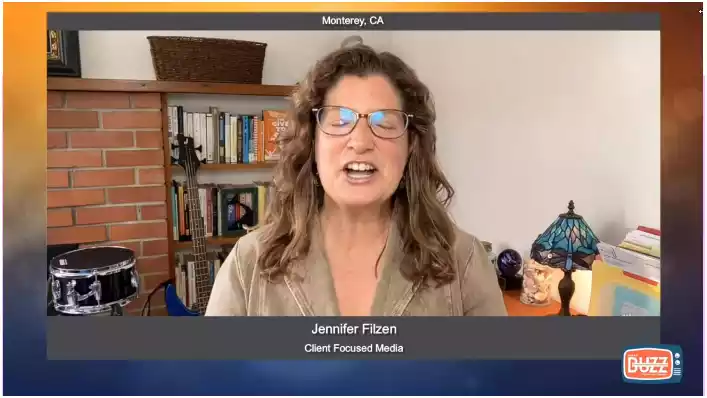Prior Authorization Process for Optimal Patient Care
Discover how an efficient prior authorization process for optimal patient care, minimizing delays and ensuring timely, effective treatment. Learn strategies for optimizing this essential healthcare function.

The healthcare system is constantly evolving to enhance efficiency and patient care. But what is the difference between a referral and a prior authorization? A referral is a recommendation from a primary care physician for a patient to see a specialist or receive specific services. It ensures continuity of care and proper coordination among healthcare providers. In contrast, prior authorization is a requirement from an insurance company that must be met before certain services or medications are approved for coverage. This process verifies medical necessity and helps manage healthcare costs. Understanding these distinctions is essential for navigating the healthcare system effectively. Let’s delve deeper into their roles and impacts on patient care.
Let’s start!
Table of Contents
Prior Authorization Process for Optimal Patient Care

What is Prior Approval?
Prior approval involves healthcare providers seeking permission from a patient’s insurance provider before prescribing medications or carrying out procedures. This step aims to confirm that the recommended service is medically necessary and falls within the coverage scope of the patient’s insurance plan.
The Significance of Process Streamlining
While the importance of approval cannot be overstated, its current process can be complex, resulting in care delays. Simplifying this procedure can help reduce these delays, enabling patients to access treatments efficiently. Additionally, a streamlined approach can ease the workload of healthcare providers and enhance overall patient satisfaction.
Examining Current Challenges in Prior Approval
The prior authorization process faces hurdles such as complexities and communication breakdowns. These challenges often lead to treatment delays that impact the quality of patient care. Exploring ways to improve the authorization procedure is crucial to tackle these concerns.
Understanding Prior Authorization
Prior authorization entails a series of steps where a healthcare provider needs approval from an insurer before proceeding with a treatment. This approval process aims to determine the necessity of the recommended treatment by the patient’s insurance coverage.
Why is it Important?
Insurance companies use authorization as a cost-control measure to ensure they cover treatments and medications that are medically necessary and effective. This process helps prevent procedures and lower overall healthcare costs.
Key Players Involved
The main participants in the authorization process include healthcare providers, insurance companies, and patients. Each party plays a role in ensuring a process:
- Healthcare Providers: Responsible for initiating the prior authorization request by providing medical justification.
- Insurance Companies: Evaluate the request based on coverage guidelines. Give approval, denial, or requests for information.
Patients Impacted by the approval process potentially experience delays in receiving treatment or medications.
Challenges in Current Prior Authorization Procedures
Administrative Challenges
Prior authorization frequently involves paperwork and time-consuming procedures. Healthcare professionals are required to complete paperwork and submit medical records, which is time-consuming. This administrative task wastes time and resources that could otherwise be dedicated to patient care. Communication is vital in the authorization process between healthcare providers and insurance companies. Any miscommunication or lack of updates can cause delays, leading providers to repeatedly contact insurers for approvals. One major issue with the authorization system is the potential delay in patient treatment. These delays can worsen a patient’s condition and prolong their suffering in such situations. Prompt approvals are essential for ensuring quality care is maintained.
When prior authorization procedures are slow-moving, patients may experience waits for treatments or medications. This not only impacts their well-being but also contributes to heightened anxiety and frustration, affecting their overall healthcare experience. One practical approach to streamline the authorization process is standardizing forms and procedures. Creating forms that all insurance companies and healthcare providers can utilize can significantly reduce the administrative workload. Ensuring communication, minimizing errors, and expediting the approval process are aspects of this strategy.
Enhancing Communication Channels
Establishing communication channels between healthcare providers and insurance companies is crucial for prior authorization procedures. Introducing lines of communication like phone connections or secure messaging applications can facilitate faster and more productive information sharing.
Collaborating with Healthcare Providers
Insurance firms can work closely with healthcare providers to create authorization processes. By setting criteria and guidelines regarding necessity, both parties can ensure that all required information is readily available, reducing the usual delays caused by back-and-forth exchanges.
Introducing Educational Initiatives
Providing education to healthcare personnel about the authorization process. Its requirements can result in more precise and punctual submissions. Training programs can help staff grasp the specific data insurers require, decreasing the chances of inaccurate submissions that cause approval delays.
I'm very thankful for Portiva who I know is looking after my practice while I'm gone the virtual assistants can manage prescription refills, documents they can triage patients and just kind of answer administrative questions and they can handle a lot on their own. But also, they're very good about contacting me if there's any emergency or anything I need to attend to. So I'm very thankful for Portiva they can help almost any provider almost anywhere and it really allows for some good work-life balance as I'm getting to experience right now at my family farm so I'm very thankful for Portiva and I'm very happy to use their services"

Board Certified Family Medicine Physician

Portiva's Virtual Medical Assistant - I have all the support I need. There's somebody checking my email, any patient messages. Patients are still able to schedule and handle any scheduling issues and any kind of billing that needs to still go through. Portiva hands handles it all for me. I have support i have somebody that I can access 24/7 pretty much. It's all very seamless. If somebody has an emergency or needs a medication called in. I know that the va's at portiva will handle that for me.

Board Certified Family Medicine Physician

Advantages of an Efficient Prior Authorization Procedure

An optimized authorization system can improve patient care by guaranteeing prompt access to essential treatments and medications. This enhancement can lead to patient health outcomes and a positive overall experience.
Lowered Administrative Expenses
Hospitals and clinics often bear costs due to the labor-intensive nature of prior authorization processes. By streamlining these procedures, healthcare facilities can cut down on expenses, enabling them to allocate resources to patient care.
Enhanced Adherence to Regulations
Simplified processes can assist healthcare providers in adhering to regulations. Protocols and clear guidelines make it simpler to meet requirements while keeping patient care the main priority.
Improved Patient Satisfaction
When patients receive their treatments promptly and smoothly, their satisfaction with the healthcare system increases. This heightened satisfaction can foster relationships between patients and providers, build trust in the healthcare system, and enhance health outcomes.
Success Stories of Streamlining Prior Authorization through Case Studies
Illustrative Example 1: Implementation of Standardized Forms by a Health System
A health system introduced forms for prior authorization across all its facilities. This adjustment significantly decreased staff time spent on tasks, allowing them to dedicate attention to patient care. The standardized forms lowered submission errors and improved patient results and approvals.
Illustrative Example 2: Enhanced Communication for Expedited Approvals
A leading insurance company collaborated with a network of healthcare providers to establish a communication platform for authorization requests. This platform enabled providers to submit accurate information, reducing the need for follow-ups. The approval process sped up significantly, improving care and strengthening relationships between healthcare providers and insurance companies. For instance, a training program was introduced at a hospital to educate staff on authorization requirements. This initiative led to submissions, increased compliance with regulations, reduced denials and delays, and ultimately enhanced patient satisfaction and outcomes.
The current prior authorization procedures pose challenges for patients and healthcare providers alike. However, by implementing measures like standardization, better communication, and education, the process can benefit care more efficiently. These improvements enhance experiences, cut administrative expenses, and ensure regulatory compliance. A smoother prior authorization process can be achieved through collaboration between insurers and healthcare institutions, leading to satisfaction levels and better health outcomes. All stakeholders must collaborate to simplify this process while prioritizing patient treatment access. Continuous efforts to streamline authorization are expected to create an effective healthcare system that focuses on patients’ needs. Stay updated by following industry news updates and conversing with healthcare professionals. Let’s work together to enhance the authorization procedure and improve care quality. I appreciate you taking the time to read this!
To learn more about insurance policy that can enhance your medical practice. Discover more about Portiva and unlock a world of possibilities by visiting our homepage today!
- Prior authorization support in patient care management
- Assessing the economic consequences of prior authorization
- Strategic prior authorization for better operations
- Prior authorization policies
- Prior authorization for medical treatments
- Economic trade-offs of prior authorization policies
- Navigating the prior authorization process as a patient
- Simplifying the prior authorization process
- Precertification technology and patient satisfaction
- Protecting patients with prior authorization technology
- Mitigating risks in prior authorization procedures
- Prior authorization with custom solutions
- Simplified prior authorization assistance
- Methods of risk management for prior authorization
- Why quality assurance is essential for effective prior authorization processes
- Ensuring excellence in prior authorization
- Preauthorization technology for office managers
- Prior authorization for efficient healthcare delivery
- Tailored approaches for streamlining prior authorization in healthcare


